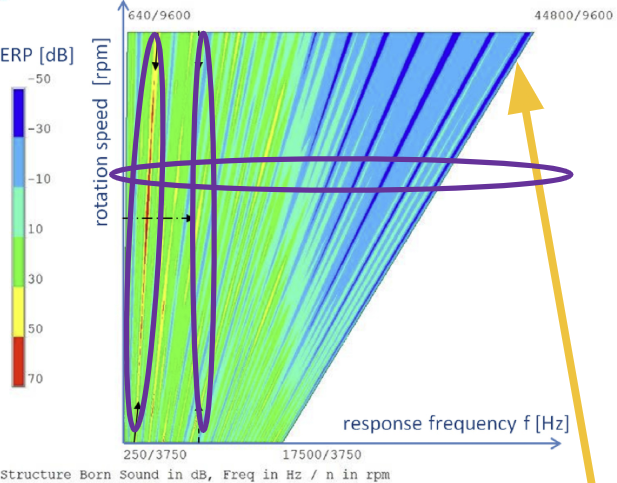Maxwell Multiple RPM Harmonic Force Coupling
Waterfall analysis is a tool that is often used to evaluate the acoustic and/or vibratory performance of rotating machinery. Maxwell multiple RPM coupled with Ansys Harmonic Response provides a powerful tool to generate acoustic performance map of electric machines. The process involves calculating harmonic force using discrete Fourier transform (DFT) methods at each rpm (revolutions per minute), and performing harmonic response analysis at every selected frequency with calculated harmonic force loads.
Waterfall computation is given by ERP=ERP(f, rpm) making use of load interpolation between computed RPM.

The Waterfall contour map shows the full acoustic fingerprint of the machine, where:
- Vertical Line: Given by one fixed eigenfrequency excited at different speeds of rotation.
- Horizontal Line: Single rpm load case yielding one frequency response function.
- Inclined Line: Excitation order of the electromagnetic force-density revealing a large ERP zone with its origin in single eigenfrequency that is met by both frequency and spatial load pattern of excitation and system mode.
To set up a Maxwell design for multiple RPMs coupling:
- In the Mechanical tab of the Motion Setup window, specify angular velocity (RPM) with a design variable.
- In the General tab of the Solve Setup window, specify the appropriate stop time and timestep using the same design variable.
- Add a parametric setup to sweep the variable.
-
Select the parametric setup as Embedded Parametric Analysis in the DesignXplorer setup.
